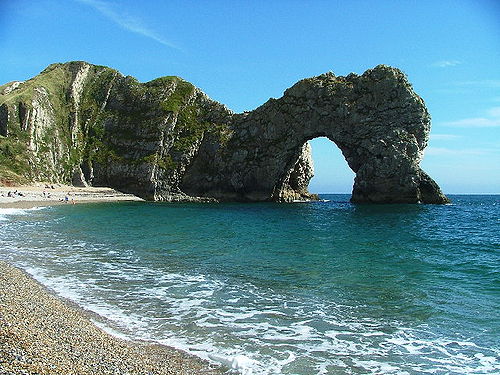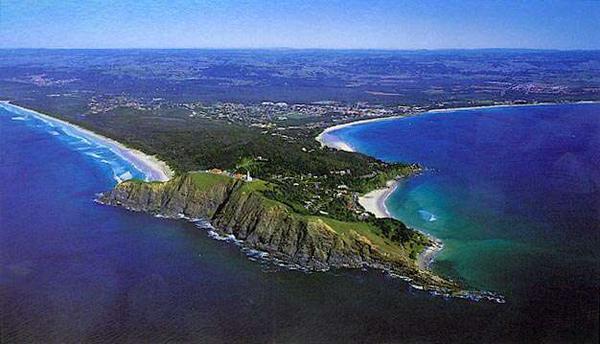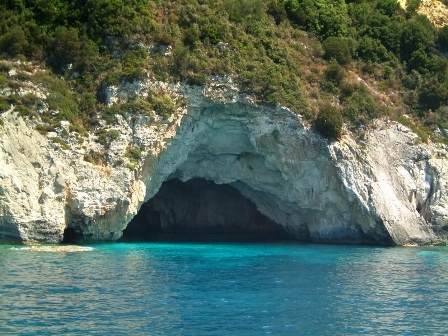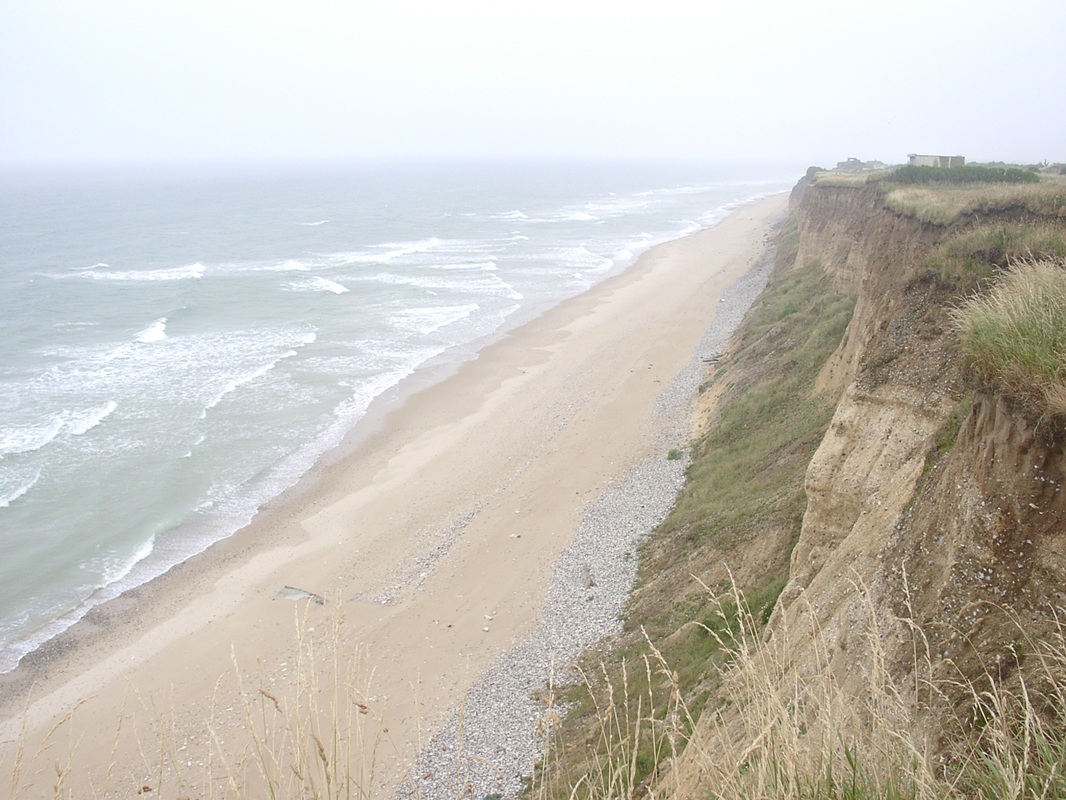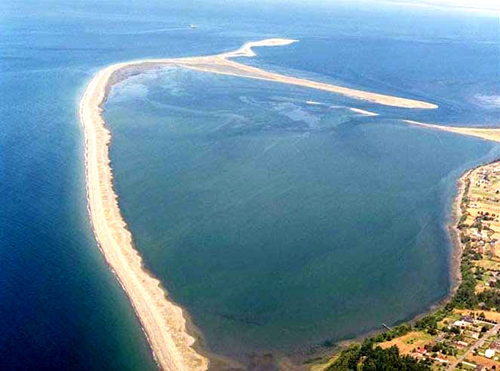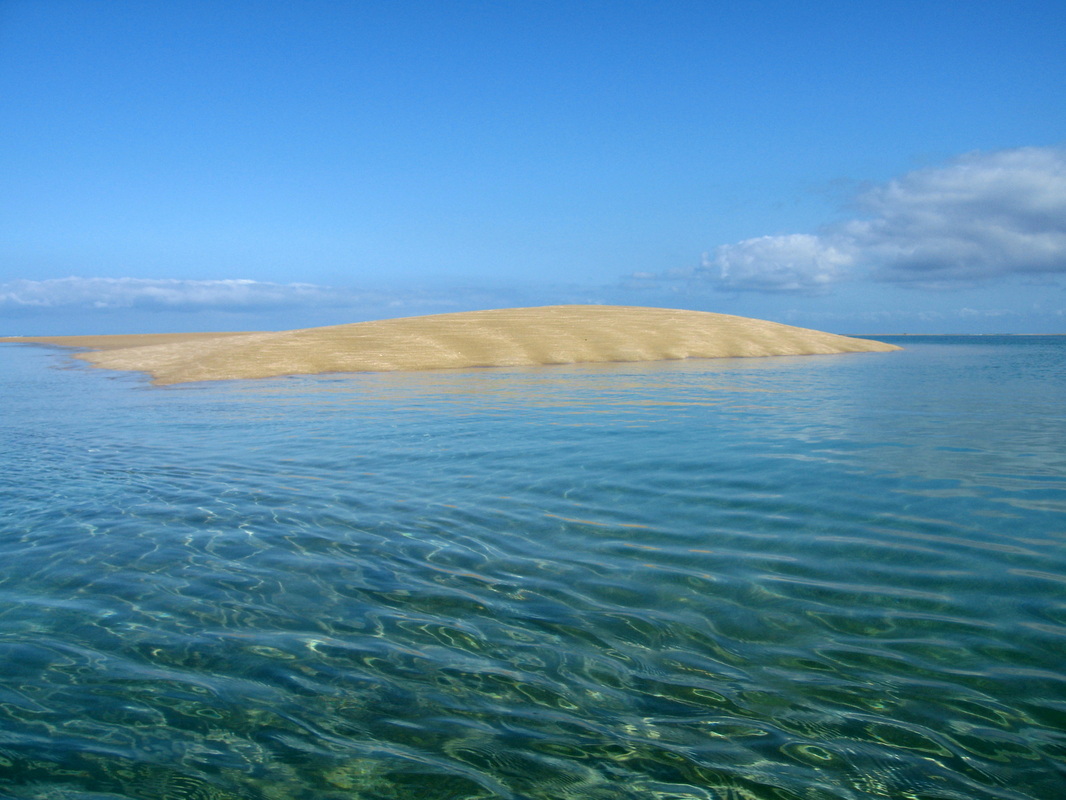How Waves Form
|
The energy in a wave comes from the wind that blows across the waters surface. As the wind touches the water it transfers its energy. The energy that the water picks up makes the water particles move up and down, but they don't move forward.
A wave changes as it moves closer to land. In deep water only the surface is affected by a wave, but once they get to more shallow water, the waves start to drag on the bottom. Now that the wave has friction, the wave starts to slow down. Not until now do the water particles actually move, and can shape a shoreline. |
|
Erosion By Waves
How Waves Erode
|
One way waves erode the land is by impact. Large waves hit rocks with lots of force. The energy in waves can break apart rocks. Over time waves make small cracks bigger. Eventually the wave causes the rock to chip off. Waves can also erode rock by abrasion. As a wave comes to shallow water it picks up sediment. Once the wave crashes against land the sediment wears the rock down.
As a wave approaches land it usually changes direction due to the way the wave drags on the bottom. When these waves change direction they can create a headland. A headland is a part of the shore that sticks out into the ocean. The headland sticks out from the shoreline because it is made from harder rock than the rest of the coast, making the shore erode before the headland. |
|
Landforms Created By Wave Erosion
|
The softer rock along the coastline erodes first. Sometimes waves can erode a hollow area called a sea cave. Over time waves can also erode the base of a cliff so much that it makes the rock above it collapse, creating a wave cut cliff. Another landform that is created by waves is called a sea arch. A sea arch forms when waves erode a layer of soft rock that is underneath a layer of hard rock. If a sea arch collapses it creates a seastack, which is a large stack of rock in the middle of the water.
|
Deposits By Waves
Beaches
|
A beach is an area of wave-washed sediment along a coast. A beach is formed when a wave drops its sediment on a coast. The sediment deposited on a beach is usually sand. Most sand comes from rivers that dumped eroded particles of rock in the ocean. Not all beaches are made of sand, some are made up of small fragments of shells or coral. The sediment on a beach usually moves down the shore after it has been deposited. Waves hit the beach on an angle instead of a straight line, which can cause the current to run parallel to the coastline. As the waves hit the shore, some of the sediment moves along with the current in a process called longshore drift.
|
|
Spits
Sandbars and Barrier Beaches
|
A sandbar is a long ridge of sand parallel to the shore. Sandbars occur when incoming waves deposit their sediment before the waves get to the beach. A barrier beach is similar to a sandbar but not exactly the same.
A barrier beach forms when waves pile huge amounts of sand above sea level, that forms a long narrow island. Barrier beaches are parallel to the coast as well. |
